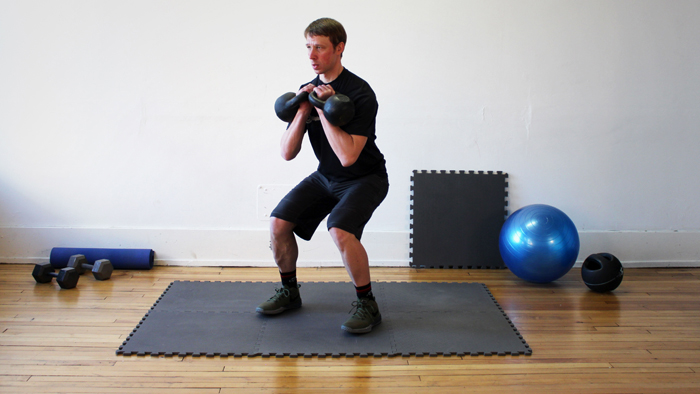SIMPLE STRENGTH TRAINING FOR CYCLING
The best way to improve as a cyclist is to ride more. If you want to climb better; climb more. Want to improve your Time Trialling? Time Trial more. Struggling with your descending? Descend more. You get the picture, but as true as the above is there are other additions that can help you progress into becoming the best cyclist you can be.
Lifting weights and cycling may initially seem to be at opposite ends of the spectrum, but strength training can be of benefit to cyclists of all abilities. In this article, we’ll outline some exercises that can directly impact performance on the bike and hopefully make you a stronger, better cyclist.
TRAINING AT THE GYM OR AT HOME
When most people hear the words weight or strength training, they normally think they’ll need a gym membership and have to make time to go to the gym. While training at a gym is definitely an option, it’s not the only option. Strength training can be done at home with a cheap set of dumbbells, a selection of weight plates and less than 20 minutes of your time, to get started you can even forgo the dumbbells/weights and just start with bodyweight exercises. A great quote to remember is:
“Strength training can happen with every tool on the market or with none.”
Basically, it's better to do something instead of nothing, and if that something is bodyweight training, then that’s a great place to start.
BUILDING A SOLID FOUNDATION
Cycling is a leg dominant and aerobic sport; you’re constantly pushing the pedals with varying degrees of resistance depending on if you’re going uphill, on the flats or going downhill. Therefore, the main focus for strength training will be training your legs. However, when cycling you might notice occasional lower back pain after a few hours in the saddle. This can be caused by a few things, such as a bad bike fit, poor pedalling form or lack of glute activation. But it can also be caused by a weak core; your abdominal muscles assist in supporting your upper body on the bike, if your core is weak you might feel like all of your weight is resting on your hands, and after a while you’ll feel this through your shoulders and lower back. Working towards a stronger core should help alleviate this pain, and will also assist in keeping your upper body rock solid while on the bike - for the less energy you waste on your upper body moving around, the more energy you can devote to putting power through the pedals.
WHICH EXERCISES?
There are hundreds of exercises for building strength, and a multitude of machines can be found in most gyms. To keep this simple, we’ll be sticking with a few fundamental exercises.
THE SQUAT
One of the main compound lifts, there are many variations of the squat that all target the muscles of the legs in slightly different ways. The best place to start is with basic bodyweight squats, this will allow you to master the movement first before adding any weight/resistance.
Once you’ve mastered the bodyweight squat, you can move onto squatting with weight. This can be done with a dumbbell, in an exercise called the Goblet Squat. Or with a barbell in a Back Squat or a Front Squat.
THE DEADLIFT
Another of the main compound lifts, the deadlift is especially beneficial to cyclists, as most cyclists tend to have underdeveloped hamstrings and overdeveloped quads. The conventional deadlift is best performed with a barbell but can also be performed with a set of dumbbells.
If you’re just starting out with bodyweight exercises, or don’t have access to weights, then the Pistol Squat is a great bodyweight alternative to the deadlift.
FLUTTER KICKS
For strengthening your core, Flutter Kicks are a solid exercise and best of all they can be done without any extra equipment.
RENEGADE ROWS
A second exercise for targeting your core, is the Renegade Row. performed by starting in a push-up position and raising/rowing one arm at a time. This exercise is best performed with dumbbells, but it can also be done as a bodyweight exercise with no weights.
PUTTING IN ALL TOGETHER
As we’re just starting simply, the best way to add the above exercises into your current cycling training would be to dedicate 15 minutes twice a week to weight training.
Initially, start with just the bodyweight variations of the exercises and familiarise yourself with the movements. Then once you’re comfortable, move onto using weights and slowly increase the amount of weight each week. Aim for something like this:
DAY 1
Squat - 3 sets of 8 reps with a 30 seconds rest in between each set
Flutter Kicks - 3 sets of 20 kicks with a 30 seconds rest in between each set
DAY 2
Deadlift - 3 sets of 8 reps with a 30 seconds rest in between each set
Renegade Rows - 3 sets of 8 reps with a 30 seconds rest in between each set
CONSTANTLY IMPROVING
The above exercises and plan are meant as an introduction to strength training for cycling, once you’ve consistently followed the above plan for 4-6 weeks and have become comfortable with performing the exercises safely, then it may be time to move onto a more advanced plan. However, as simple as the above plan is, it will still go a long way in helping improve your cycling and everyday life.
